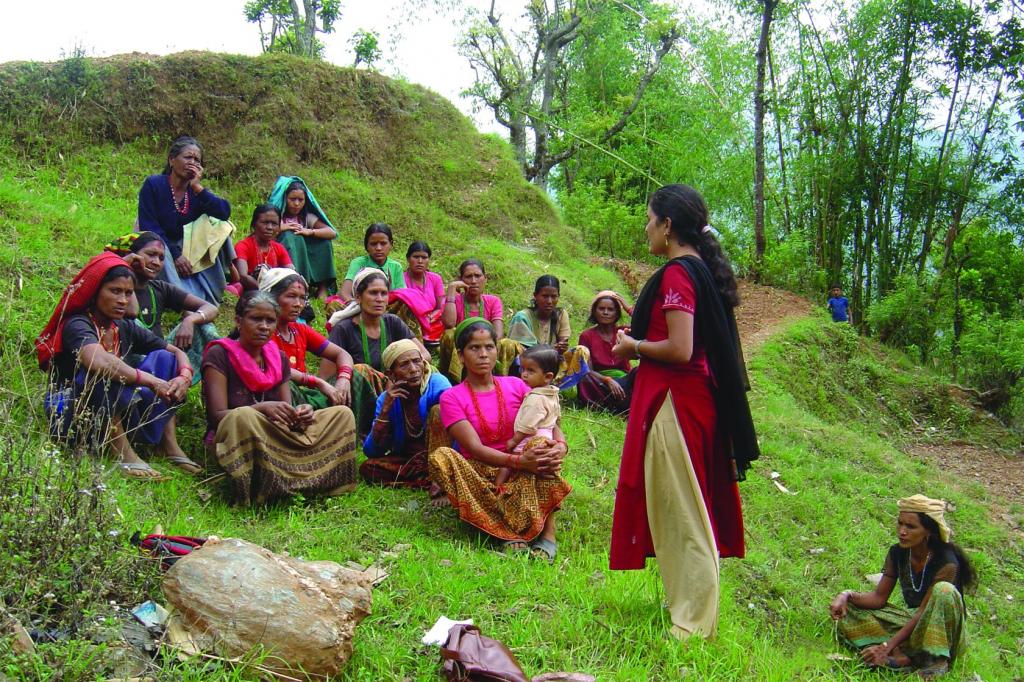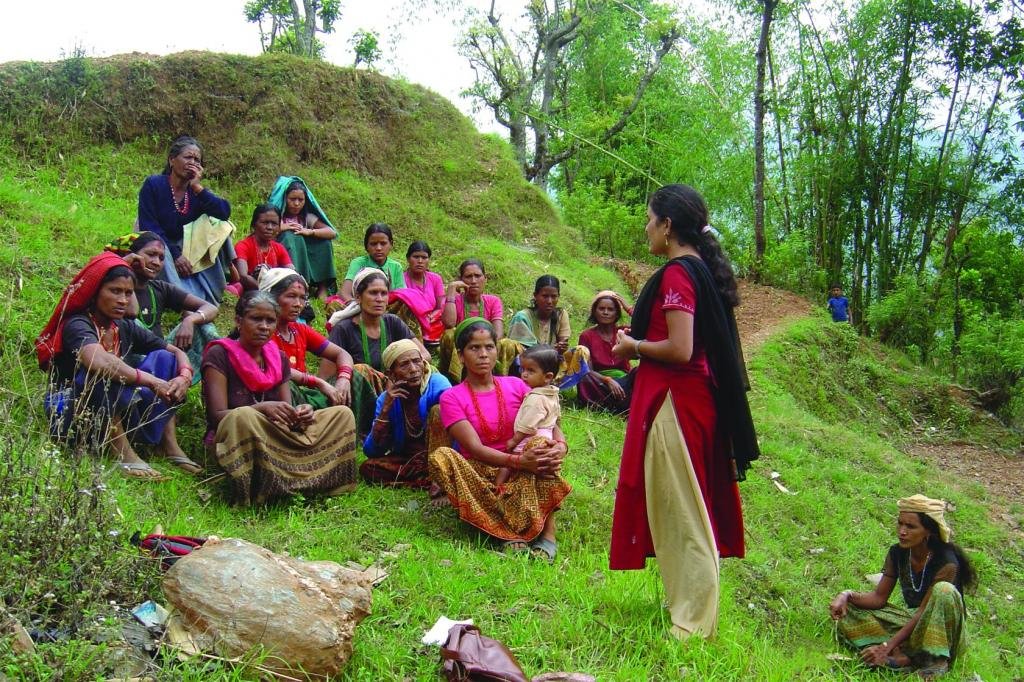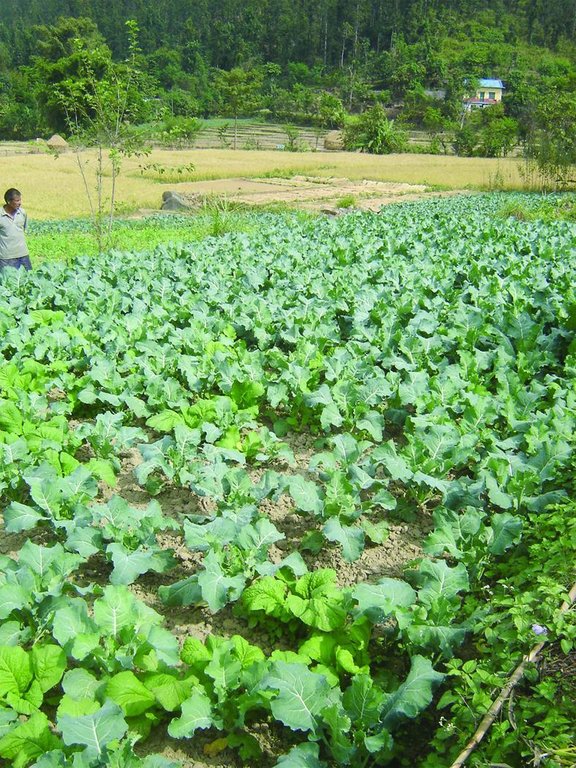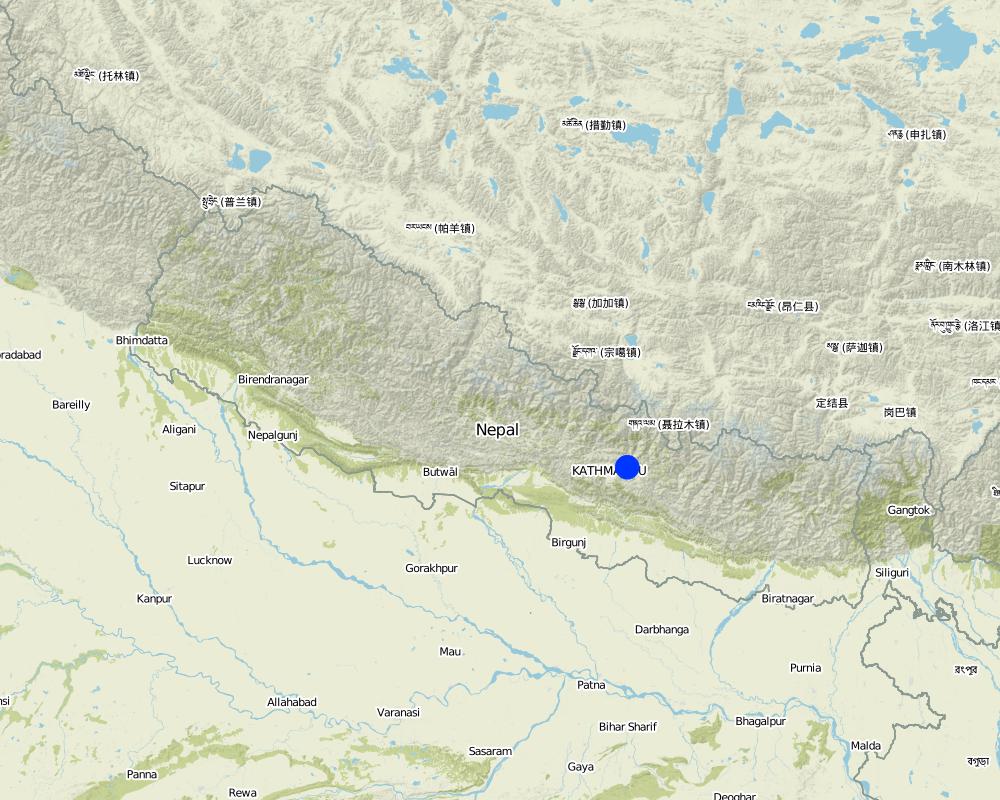Farmer-led experimentation [ເນໂປ]
- ການສ້າງ:
- ປັບປູງ:
- ຜູ້ສັງລວມຂໍ້ມູນ: Richard Allen
- ບັນນາທິການ: –
- ຜູ້ທົບທວນຄືນ: Laura Ebneter
Krishak ko aguwai ma garine parikshan (Nepali)
approaches_2559 - ເນໂປ
ເບິ່ງພາກສ່ວນ
ຂະຫຍາຍທັງໝົດ ຍຸບທັງໝົດ1. ຂໍ້ມູນທົ່ວໄປ
1.2 ລາຍລະອຽດ ການຕິດຕໍ່ ຂອງບຸກຄົນທີ່ຊັບພະຍາກອນ ແລະ ສະຖາບັນ ການມີສ່ວນຮ່ວມ ໃນການປະເມີນຜົນ ແລະ ເອກະສານ ຂອງວິທີທາງ
ຜູ້ຊ່ຽວຊານ ດ້ານການຄຸ້ມຄອງ ທີ່ດິນແບບຍືນຍົງ:
Soil Management Directorate
+977 1 5520314
Department of Agriculture
Harihar Bhawan, Lalitpur
ເນໂປ
ຜູ້ຊ່ຽວຊານ ດ້ານການຄຸ້ມຄອງ ທີ່ດິນແບບຍືນຍົງ:
Team Leader Sustainable Sustainable Soil Management Programme (SSMP)
+977 1 5543591
ssmp@helvetas.org.np
Sustainable Soil Management Programme (SSMP)
GPO Box 688, Kathmandu
ເນໂປ
ຊື່ຂອງໂຄງການ ທີ່ອໍານວຍຄວາມສະດວກ ໃນການສ້າງເອກກະສານ ຫຼື ປະເມີນດ້ານແນວທາງ (ຖ້າກ່ຽວຂ້ອງ)
Sustainable Soil Management Programme, Nepal (SSMP)ຊື່ຂອງ ສະຖາບັນການຈັດຕັ້ງ ທີ່ອໍານວຍຄວາມສະດວກ ໃນການສ້າງເອກກະສານ ຫຼື ປະເມີນແນວທາງ (ຖ້າກ່ຽວຂ້ອງ)
HELVETAS (Swiss Intercooperation)1.3 ເງື່ອນໄຂ ຂອງການນໍາໃຊ້ເອກກະສານຂໍ້ມູນ ຂອງ WOCAT
ຜູ້ສັງລວມ ແລະ ບັນດາຜູ້ຕອບແບບສອບຖາມ ຍອມຮັບໃນເງື່ອນໄຂ ການນໍາໃຊ້ຂໍ້ມູນເອກະສານ ທີ່ສ້າງຂື້ນ ໂດຍຜ່ານ ອົງການ WOCAT:
ແມ່ນ
1.4 ເອກະສານອ້າງອີງ (ຫຼາຍ) ກັບແບບສອບຖາມ (ຫຼາຍ) ເຕັກໂນໂລຢີ ຂອງດ້ານການຄຸ້ມຄອງ ດິນແບບຍືນຍົງ
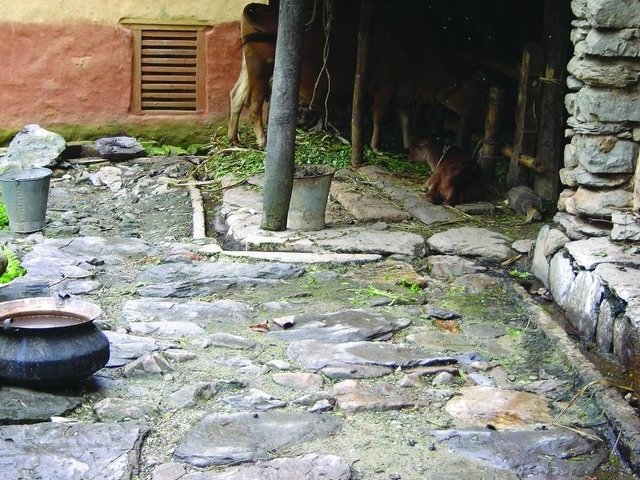
Improved cattleshed for urine collection [ເນໂປ]
Collection of cattle urine in improved cattle sheds for use as liquid manure and organic pesticide
- ຜູ້ສັງລວມຂໍ້ມູນ: Richard Allen
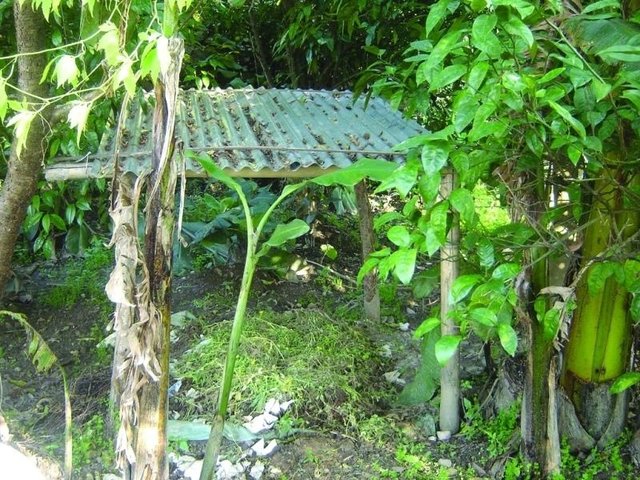
Improved compost preparation [ເນໂປ]
Improved compost preparation using a range of biomass and waste to produce high value fertiliser
- ຜູ້ສັງລວມຂໍ້ມູນ: Richard Allen
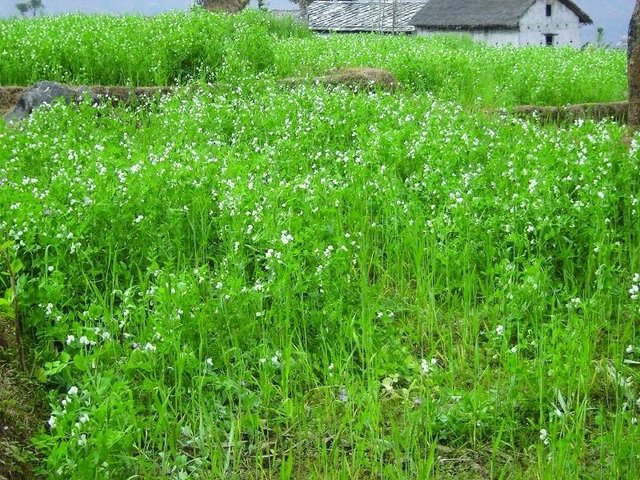
Legume integration [ເນໂປ]
Integration of leguminous crops as intercrops on terrace risers or as relay crops
- ຜູ້ສັງລວມຂໍ້ມູນ: Richard Allen
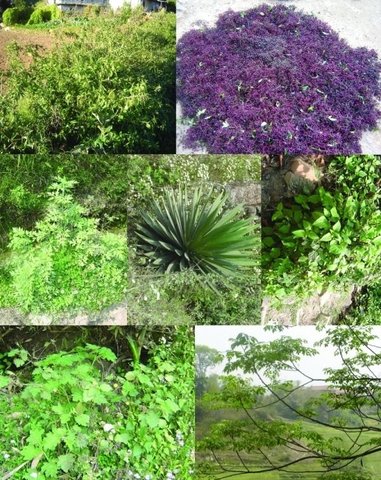
Organic pest management [ເນໂປ]
Promotion of botanical pesticides for organic pest management and liquid manure
- ຜູ້ສັງລວມຂໍ້ມູນ: Richard Allen
2. ພັນລະນາ ແນວທາງການຄຸ້ມຄອງນໍາໃຊ້ດິນແບບຍືນຍົງ
2.1 ການອະທິບາຍ ໂດຍຫຍໍ້ ຂອງວິທີທາງ
Participatory technology testing and adaptation through farmer-led experiments
2.2 ການອະທິບາຍ ລາຍລະອຽດ ຂອງວິທີທາງ
ການອະທິບາຍ ລາຍລະອຽດ ຂອງວິທີທາງ:
Farmer-led experimentation is a type of action research initiated and carried out by farmers in their own fields. This approach enables farmers to identify technological options suited to local agroecological and socioeconomic conditions. The farmer-led experimentation process is taken up within existing farmer groups. This approach is closely related to the 'participatory innovation development' and the 'participatory technology development' approaches as discussed in Kolff et al. (2005). Simple experiments are usually replicated in five to ten farmers' fields per group. Generally, the whole of each experimental plot from each field is harvested and the yield recorded. Field implementation, group visits, and observations are carried out by the farmers themselves. The processing of results is done in groups together with the support staff from the facilitating organisation. These farmers are very likely to adopt tested technologies that are shown to be better for meeting their needs. The results are also used by support staff and shared with other organisations, and provide input for dissemination through farmer-to-farmer diffusion.
Farmers play a leading role in all steps of the process, starting from problem identification to planning, implementation, and evaluation of the experiments. This ensures that farmers are the driving force in the research process and not mere recipients of research findings that have been generated elsewhere. The detailed implementation plan is discussed within the groups and individual and collective responsibilities are assigned. The experimental site, individual implementing farmers, group visits, and results-sharing meetings are decided on by group consensus. Some observations are recorded by the implementing farmers. Promising innovations are then identified based on the collective evaluation of the tested treatments. Technical and other facilitation support is provided by organisations active in the area.
2.3 ຮູບພາບຂອງແນວທາງ
2.5 ປະເທດ / ເຂດ / ສະຖານທີ່ບ່ອນທີ່ແນວທາງໄດ້ຖືກນໍາໃຊ້
ປະເທດ:
ເນໂປ
ພາກພື້ນ / ລັດ / ແຂວງ:
Midhills
Map
×2.7 ປະເພດຂອງແນວທາງ
- ພາຍໃຕ້ໂຄງການ / ແຜນງານ
2.8 ເປົ້າໝາຍ / ຈຸດປະສົງຫຼັກ ຂອງການຈັດຕັ້ງປະຕິບັດ ວິທີທາງ
Local farmers collectively solving problems by identifying and using the most appropriate local solutions. Local farmers designing, testing and disseminating alternative technologies adapted to local conditions. Strengthening joint learning by farmers and development actors.
The SLM Approach addressed the following problems: The common issues concerning farmers in growing crops include pests and diseases, yield decline, inappropriate crop varieties, and the introduction of new varieties. Rather than technicians providing farmers with ready-made solutions to their problems (that may or may not work), farmer-led experimentation allows farmers to carry out their own trials to try and solve specific problems.
2.9 ເງື່ອນໄຂອໍານວຍ ຫຼື ຂັດຂວາງການປະຕິບັດຂອງເຕັກໂນໂລຢີ / ເຕັກໂນໂລຢີການນໍາໃຊ້ຕາມແນວທາງ
ມີຄວາມສາມາດ / ເຂັ້າເຖິງຊັບພະຍາກອນດ້ານການເງິນ ແລະ ການບໍລິການ
- ເຊື່ອງຊ້ອນ
Lack of money for technical support
Treatment through the SLM Approach: Collaborative approach amongst farmers from the same settlements
ການກໍ່ຕັ້ງສະຖາບັນ
- ເຊື່ອງຊ້ອນ
Dysfunctional government extension system
Treatment through the SLM Approach: Reliance on local human resources and farmer to farmer collaboration
ຄວາມຮູ້ກ່ຽວກັບການຄຸ້ມຄອງ ທີ່ດິນແບບຍືນຍົງ, ການເຂົ້າເຖິງການສະໜັບສະໜູນ ທາງດ້ານວິຊາການ
- ເຊື່ອງຊ້ອນ
Problems related to agricultural production and soil fertility
Treatment through the SLM Approach: esting and adaptation of technologies to local conditions using local human and natural resources
3. ການມີສ່ວນຮ່ວມ ແລະ ບົດບາດຂອງພາກສ່ວນທີ່ກ່ຽວຂ້ອງທີ່ໄດ້ມີສ່ວນຮ່ວມ
3.1 ຜູ້ມີສ່ວນຮ່ວມ ໃນວິທີທາງ ແລະ ພາລະບົດບາດ ຂອງເຂົາເຈົ້າ
- ຜູ້ນໍາໃຊ້ດິນໃນທ້ອງຖິ່ນ / ຊຸມຊົນທ້ອງຖິ່ນ
3.2 ການມີສ່ວນຮ່ວມຂອງຜູ້ນໍາໃຊ້ທີ່ດິນໃນທ້ອງຖິ່ນ / ຊຸມຊົນທ້ອງຖິ່ນໃນໄລຍະທີ່ແຕກຕ່າງກັນຂອງແນວທາງ
| ການລວບລວມ ເອົາຜູ້ນໍາໃຊ້ດິນ ໃນທ້ອງຖິ່ນ / ຊຸມຊົນທ້ອງຖິ່ນ | ໃຫ້ລະບຸ ຜູ້ໃດທີ່ມີສ່ວນຮ່ວມ ໃນແຕ່ລະກິດຈະກໍາ? | |
|---|---|---|
| ການເລີ່ມຕົ້ນ / ແຮງຈູງໃຈ | ການຮ່ວມມື | participatory discussions and exercises, field visits, farm maps, farming and labour calendar, Activities: Identification of topics for experiment based on needs and priority, Identification of technological options (indigenous and external), Farmers developing simple and appropriate experiments, De |
| ການວາງແຜນ | ບໍ່ມີ | |
| ການປະຕິບັດ | ການຮ່ວມມື | follow-up visits, discussions, Activities: Farmers implement according to the design for comparison with a control (= existing practice), Farmers note relevant observations on recording sheet. Farmers note other important observations based on their needs and interests, Technical support and discuss |
| ຕິດຕາມກວດກາ / ການປະເມີນຜົນ | ການຮ່ວມມື | field visit to experimental site by other farmers, participatory discussion and evaluation Activities: Experimenting farmers and other farmers jointly discuss and evaluate based on direct observations of the trial and from the record sheet, Discussion on the lessons learned and identifying possible |
| Research | ບໍ່ມີ |
3.4 ການຕັດສິນໃຈກ່ຽວກັບການຄັດເລືອກເຕັກໂນໂລຢີຂອງການຄຸ້ມຄອງທີ່ດິນແບບຍືນຍົງ / ເຕັກໂນໂລຢີ
ລະບຸ ຄົນທີ່ຕັດສິນໃຈ ກ່ຽວກັບການຄັດເລືອກຂອງ ເຕັກໂນໂລຢີ / ເຕັກໂນໂລຢີ ຈະໄດ້ຮັບການປະຕິບັດ:
- ຜູ້ນໍາໃຊ້ດິນຜູ້ດຽວ (ການລິເລີ່ມດ້ວຍຕົນເອງ)
ອະທິບາຍ:
Made collectively by farmers in group facilitated by organisation working with them.
Decisions on the method of implementing the SLM Technology were made by by land users* alone (self-initiative / bottom-up). Made by farmers in group
4. ການສະໜັບສະໜູນທາງດ້ານວິຊາການ, ການສ້າງຄວາມສາມາດ, ແລະ ການຈັດການຄວາມຮູ້.
4.1 ການສ້າງຄວາມສາມາດ / ການຝຶກອົບຮົມ
ຜູ້ນໍາໃຊ້ທີ່ດິນ ຫຼື ພາກສ່ວນກ່ຽວຂ້ອງອື່ນໆ ໄດ້ຮັບການຝຶກອົບຮົມບໍ່?
ແມ່ນ
ໃຫ້ລະບຸ ຜູ້ໃດທີ່ໄດ້ຮັບການຝຶກອົບຮົມ:
- ຜູ້ນໍາໃຊ້ດິນ
4.3 ສະຖາບັນການສ້າງຄວາມເຂັ້ມແຂງ (ການພັດທະນາອົງການຈັດຕັ້ງ)
ສະຖາບັນ ໄດ້ຮັບການສ້າງຕັ້ງຂື້ນ ຫຼື ໄດ້ຮັບການສ້າງຄວາມເຂັ້ມແຂງ ໂດຍການຈັດຕັ້ງປະຕິບັດ ວິທີທາງບໍ່?
- ມີ, ພໍສົມຄວນ
ລະບຸ ທາງສະຖາບັນ ໄດ້ສ້າງຄວາມເຂັ້ມແຂງ ໃນລະດັບໃດ (ຫຼາຍ):
- ທ້ອງຖິ່ນ
ໃຫ້ລາຍລະອຽດເພີ່ມເຕີມ:
Technical support provided by project
4.4 ຕິດຕາມກວດກາ ແລະ ປະເມີນຜົນ
ການຈັດຕັ້ງປະຕິບັດ ວິທີທາງ ໄດ້ມີການປະເມີນຜົນ ແລະ ຕິດຕາມບໍ?
ແມ່ນ
ຄວາມຄິດເຫັນ:
bio-physical aspects were monitored by land users through observations
technical aspects were monitored by land users through observations
economic / production aspects were monitored by land users through observations
area treated aspects were monitored by land users through observations
land users involved aspects were monitored by land users through observations
management of Approach aspects were monitored by land users through observations
There were several changes in the Technology as a result of monitoring and evaluation: The adoption of certain technologies has occurred as a result of farmer-led experimentation. For example, a farmer-led trial of two varieties of groundnut (local and B4), in Ghadgaon, Surkhet, led to farmers starting to grow the B4 variety in an area where previously only local varieties had been growing
5. ການສະໜັບສະໜູນທາງດ້ານການເງິນ ແລະ ອຸປະກອນຈາກພາຍນອກ
5.1 ງົບປະມານປະຈໍາປີ ສໍາລັບວິທີທາງ ຂອງການຄຸ້ມຄອງ ທີ່ດິນແບບຍືນຍົງ
ຄໍາເຫັນ (ຕົວຢ່າງ: ແຫຼ່ງຂໍ້ມູນຫຼັກ ຂອງການສະໜອງທຶນ / ຜູ້ໃຫ້ທຶນທີ່ສໍາຄັນ):
Approach costs were met by the following donors: local community / land user(s) (local resources, labour, land): 50.0%; other (Dev. project(inputs, external resources)): 50.0%
5.2 ການສະໜັບສະໜູນ ທາງດ້ານການເງິນ / ອຸປະກອນ ສະໜອງໃຫ້ແກ່ຜູ້ນໍາທີ່ດິນ
ຜູ້ນໍາໃຊ້ດິນ ໄດ້ຮັບການສະໜັບສະໜູນ ທາງດ້ານ ການເງິນ / ອຸປະກອນ ໃນການຈັດຕັ້ງປະຕິບັດ ເຕັກໂນໂລຢີບໍ?
ແມ່ນ
ຖ້າແມ່ນ, ໃຫ້ລະບຸປະເພດ (ຫຼາຍ) ຂອງການສະໜັບສະໜູນ, ເງື່ອນໄຂ ແລະ ຜູູ້ສະໜອງ (ຫຼາຍ):
Provided by the project for testing purposes
5.3 ເງິນສົມທົບສໍາລັບການນໍາໃຊ້ສະເພາະປັດໃຈຂາເຂົ້າໃນການຜະລີດກະສິກໍາ (ລວມທັງແຮງງານ)
ຖ້າແຮງງານ ຂອງຜູ້ນໍາໃຊ້ດິນ ໄດ້ຮັບການສະໜັບສະໜູນ ປັດໃຈຂາເຂົ້າ, ແມ່ນບໍ່:
- ການອາສາ
6. ວິເຄາະຜົນກະທົບ ແລະ ສັງລວມບັນຫາ
6.1 ຜົນກະທົບຂອງແນວທາງ
ການຈັດຕັ້ງປະຕິບັດ ວິທີທາງ ສາມາດຊ່ວຍຜູ້ນໍາໃຊ້ທີ່ດິນ ໃນການຈັດຕັ້ງປະຕິບັດ ແລະ ບໍາລຸງຮັກສາ ເຕັກໂນໂລຢີ ການຄຸ້ມຄອງ ທີ່ດິນແບບຍືນຍົງໄດ້ບໍ?
- ບໍ່
- ມີ, ໜ້ອຍໜຶ່ງ
- ມີ, ພໍສົມຄວນ
- ມີ, ຫຼາຍ
Great impacts on soil fertility and yields have been reported after the adoption of sustainable soil management tested through farmer-led experimentation.
Did other land users / projects adopt the Approach?
- ບໍ່
- ມີ, ໜ້ອຍໜຶ່ງ
- ມີ, ພໍສົມຄວນ
- ມີ, ຫຼາຍ
Several farmers in the project area have started to do farmer-led experiments on their own, including on intercropping different vegetables and spices, and on urine application through drip irrigation
6.3 ຄວາມຍືນຍົງຂອງກິດຈະກໍາວິທີທາງ
ຜູ້ນໍາໃຊ້ ທີ່ດິນ ສາມາດສືບຕໍ່ ການຈັດຕັ້ງປະຕິບັດ ຜ່ານວິທີທາງໄດ້ບໍ່ (ໂດຍປາດສະຈາກ ການຊ່ວຍເຫຼືອ ຈາກພາກສ່ວນພາຍນອກ)?
- ແມ່ນ
ຖ້າ ໄດ້, ອະທິບາຍເຫດຜົນ:
Some farmers are implementing the approach on their own initiative. This is possible because of the low costs and limited technical requirements of the approach. Farmers exposed to the approach will be able to apply the approach again to problems that arise in their fields without the need to consult outside agencies.
6.4 ຈຸດແຂງ / ຂໍ້ດີ ຂອງວິທີທາງ
| ຈຸດແຂງ / ຈຸດດີ / ໂອກາດ ຈາກທັດສະນະຂອງຜູ້ປ້ອນຂໍ້ມູນ ຫຼື ບຸກຄົນສຳຄັນ |
|---|
| The approach serves both as a local test for suitability and adaptation potential as well as for demonstrating an already tested technology. |
| Once farmers are exposed to the approach, they can apply it on their own initiative. This is possible because of the low costs and technical requirements of the approach. |
| Experiments are conducted on the basis of farmers' priorities and according to local conditions. This means that farmers develop ownership of the experiments and the derived results. |
6.5 ຈຸດອ່ອນ / ຂໍ້ເສຍຂອງແນວທາງ ແລະ ວິທີການແກ້ໄຂໃຫ້ເຂົາເຈົ້າ
| ຈຸດອ່ອນ ຫຼື ຂໍ້ເສຍ ຫຼື ຄວາມສ່ຽງ ໃນມຸມມອງຂອງ ຜູ້ສັງລວມຂໍ້ມູນ ຫຼື ບັນດາຜູ້ຕອບແບບສອບຖາມ | ມີວິທີການແກ້ໄຂຄືແນວໃດ? |
|---|---|
| Experiments are not carried out in a scientifically rigorous way and therefore only have limited scientific value for evaluating technologies. | if scientific proof is required, farmer-led experiments should be closely supported by technicians (per se not a farmer-led experiment anymore!) |
| Documentation of the activities and results for wider sharing is often poor and inadequate | clear guidelines are needed for documentation with clear instructions on what, when, and how to record important information. This is necessary so that the results can be more widely used. |
| In some cases a lack of research equipment for better documentation and observation inhibits better understanding. |
7. ເອກກະສານອ້າງອີງ ແລະ ຂໍ້ມູນການເຊື່ອມໂຍງ
7.1 ວິທີການ / ແຫຼ່ງຂໍ້ມູນ
- ການໄປຢ້ຽມຢາມພາກສະໜາມ, ການສໍາຫຼວດພາກສະໜາມ
- ການສໍາພາດ ຜູ້ນໍາໃຊ້ທີ່ດິນ
7.2 ເອກະສານທົ່ວໄປທີ່ສາມາດໃຊ້ໄດ້
ຫົວຂໍ້, ຜູ້ຂຽນ, ປີ, ISBN:
SSMP (2001) Implementation Guideline on Farmer Led Experimentation (in Nepali). Kathmandu: Sustainable Soil Management Programme
ມີຢູ່ໃສ?ມູນຄ່າເທົ່າໃດ?
SSMP
ຫົວຂໍ້, ຜູ້ຂຽນ, ປີ, ISBN:
Paudel, C.L.; Regmi, B.D.; Schulz, S. (2005) - Participatory Innovation Development - Experiences of the Sustainable Soil Management Programme
ຫົວຂໍ້, ຜູ້ຂຽນ, ປີ, ISBN:
..In Kolff, A.; van Veldhuizen, L.; Wettasinha, C. (eds) Farmer-centred Innovation Development - Experiences and Challenges from South Asia, pp. 109-126. Bern:
ມີຢູ່ໃສ?ມູນຄ່າເທົ່າໃດ?
SSMP
ຂໍ້ມູນການເຊື່ອມຕໍ່ ແລະ ເນື້ອໃນ
ຂະຫຍາຍທັງໝົດ ຍຸບທັງໝົດການເຊື່ອມຕໍ່

Improved cattleshed for urine collection [ເນໂປ]
Collection of cattle urine in improved cattle sheds for use as liquid manure and organic pesticide
- ຜູ້ສັງລວມຂໍ້ມູນ: Richard Allen

Improved compost preparation [ເນໂປ]
Improved compost preparation using a range of biomass and waste to produce high value fertiliser
- ຜູ້ສັງລວມຂໍ້ມູນ: Richard Allen

Legume integration [ເນໂປ]
Integration of leguminous crops as intercrops on terrace risers or as relay crops
- ຜູ້ສັງລວມຂໍ້ມູນ: Richard Allen

Organic pest management [ເນໂປ]
Promotion of botanical pesticides for organic pest management and liquid manure
- ຜູ້ສັງລວມຂໍ້ມູນ: Richard Allen
ເນື້ອໃນ
ບໍ່ມີເນື້ອໃນ


